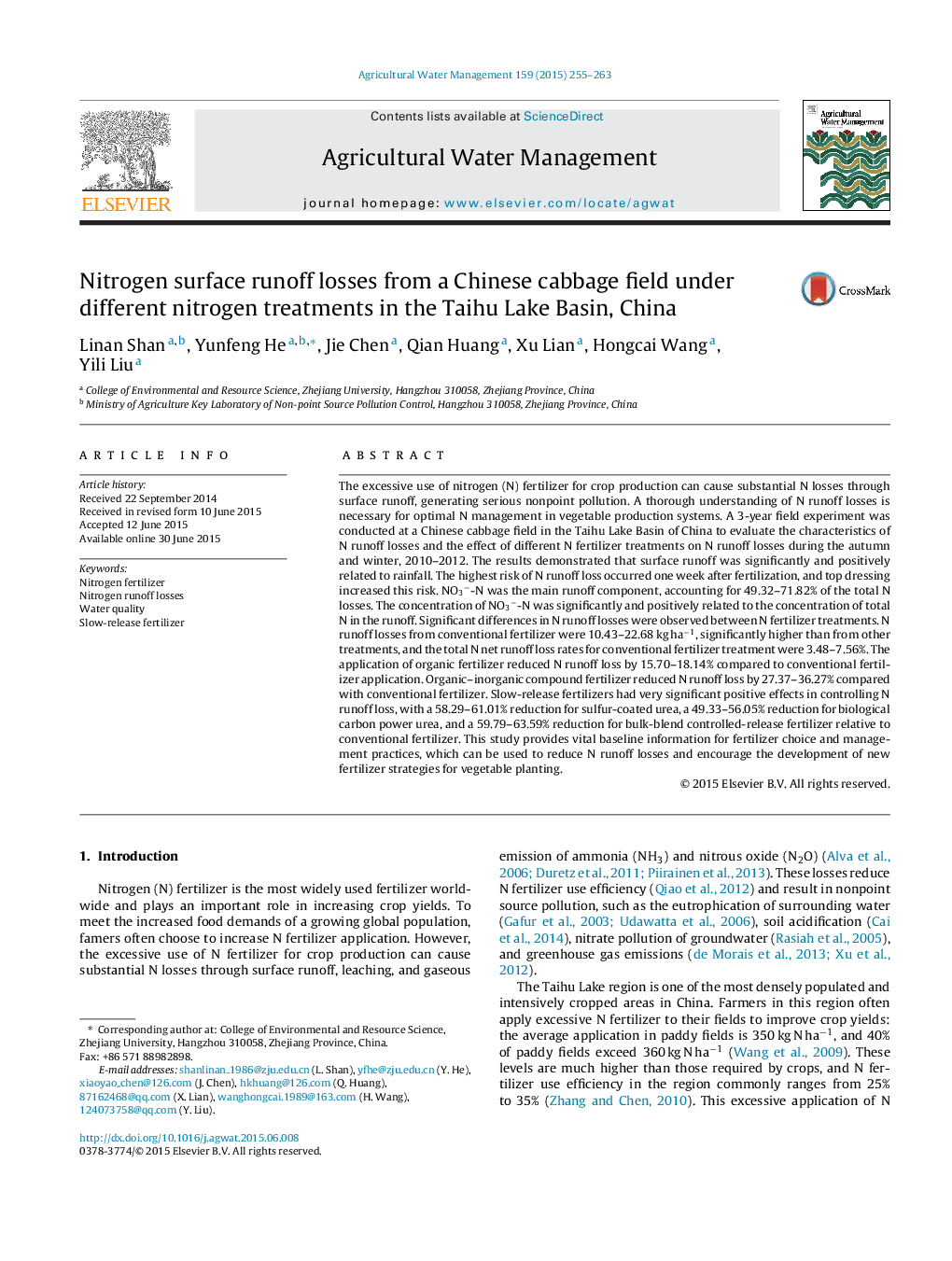| Article ID | Journal | Published Year | Pages | File Type |
|---|---|---|---|---|
| 6363733 | Agricultural Water Management | 2015 | 9 Pages |
Abstract
The excessive use of nitrogen (N) fertilizer for crop production can cause substantial N losses through surface runoff, generating serious nonpoint pollution. A thorough understanding of N runoff losses is necessary for optimal N management in vegetable production systems. A 3-year field experiment was conducted at a Chinese cabbage field in the Taihu Lake Basin of China to evaluate the characteristics of N runoff losses and the effect of different N fertilizer treatments on N runoff losses during the autumn and winter, 2010-2012. The results demonstrated that surface runoff was significantly and positively related to rainfall. The highest risk of N runoff loss occurred one week after fertilization, and top dressing increased this risk. NO3â-N was the main runoff component, accounting for 49.32-71.82% of the total N losses. The concentration of NO3â-N was significantly and positively related to the concentration of total N in the runoff. Significant differences in N runoff losses were observed between N fertilizer treatments. N runoff losses from conventional fertilizer were 10.43-22.68 kg haâ1, significantly higher than from other treatments, and the total N net runoff loss rates for conventional fertilizer treatment were 3.48-7.56%. The application of organic fertilizer reduced N runoff loss by 15.70-18.14% compared to conventional fertilizer application. Organic-inorganic compound fertilizer reduced N runoff loss by 27.37-36.27% compared with conventional fertilizer. Slow-release fertilizers had very significant positive effects in controlling N runoff loss, with a 58.29-61.01% reduction for sulfur-coated urea, a 49.33-56.05% reduction for biological carbon power urea, and a 59.79-63.59% reduction for bulk-blend controlled-release fertilizer relative to conventional fertilizer. This study provides vital baseline information for fertilizer choice and management practices, which can be used to reduce N runoff losses and encourage the development of new fertilizer strategies for vegetable planting.
Related Topics
Life Sciences
Agricultural and Biological Sciences
Agronomy and Crop Science
Authors
Linan Shan, Yunfeng He, Jie Chen, Qian Huang, Xu Lian, Hongcai Wang, Yili Liu,
